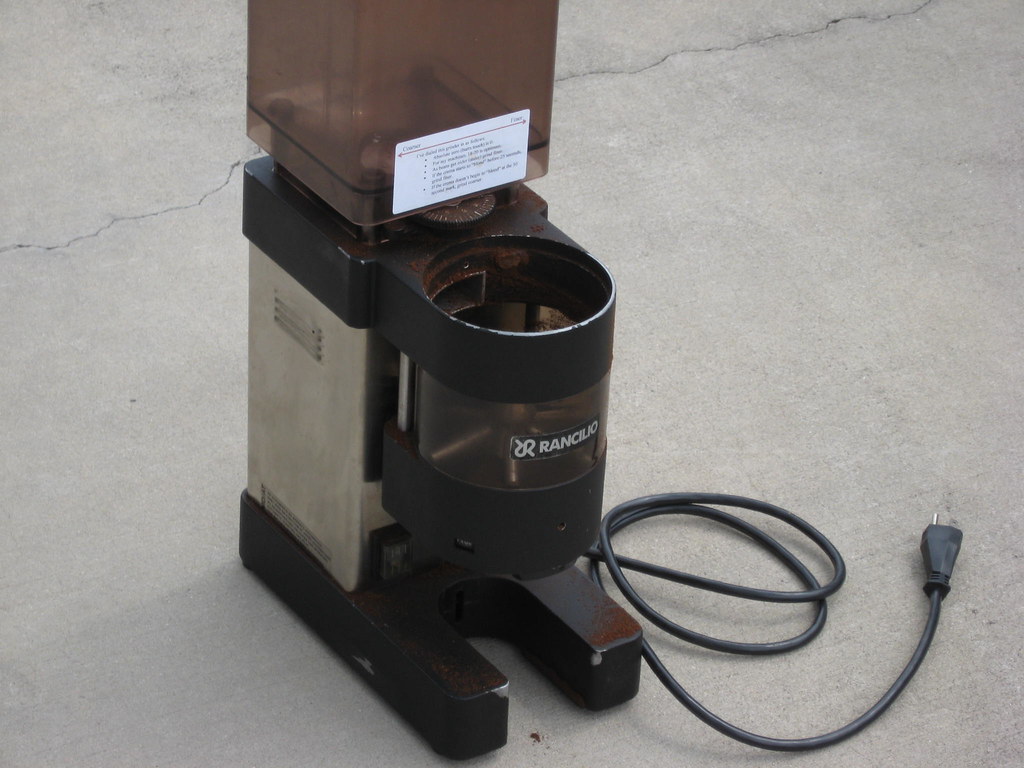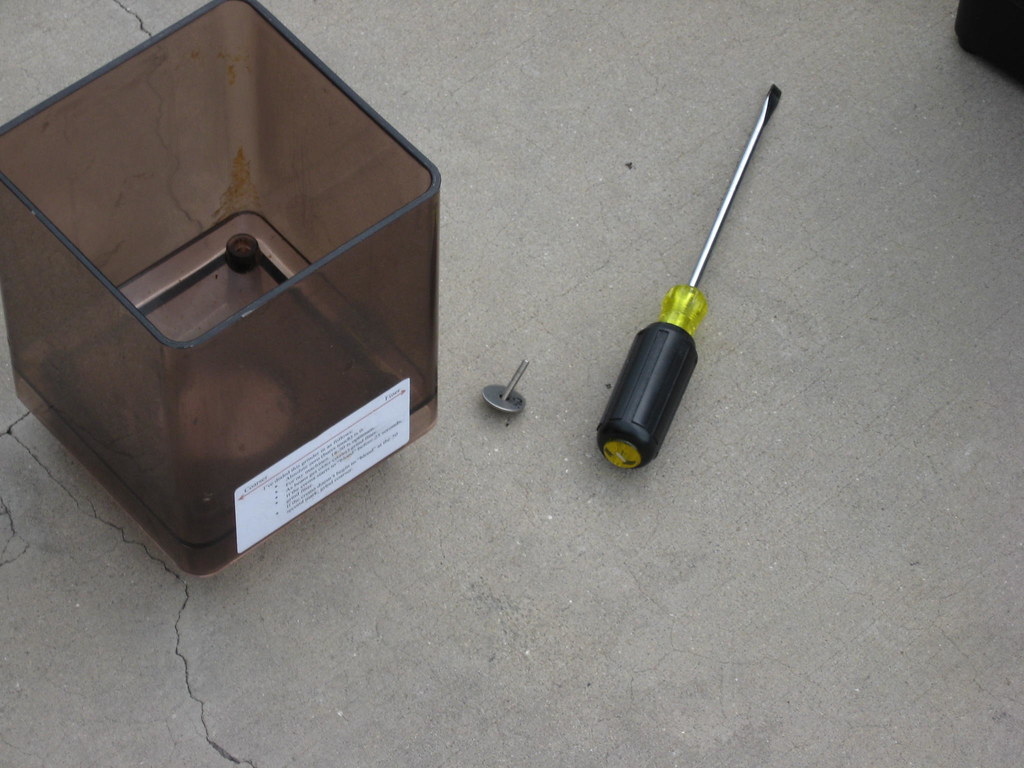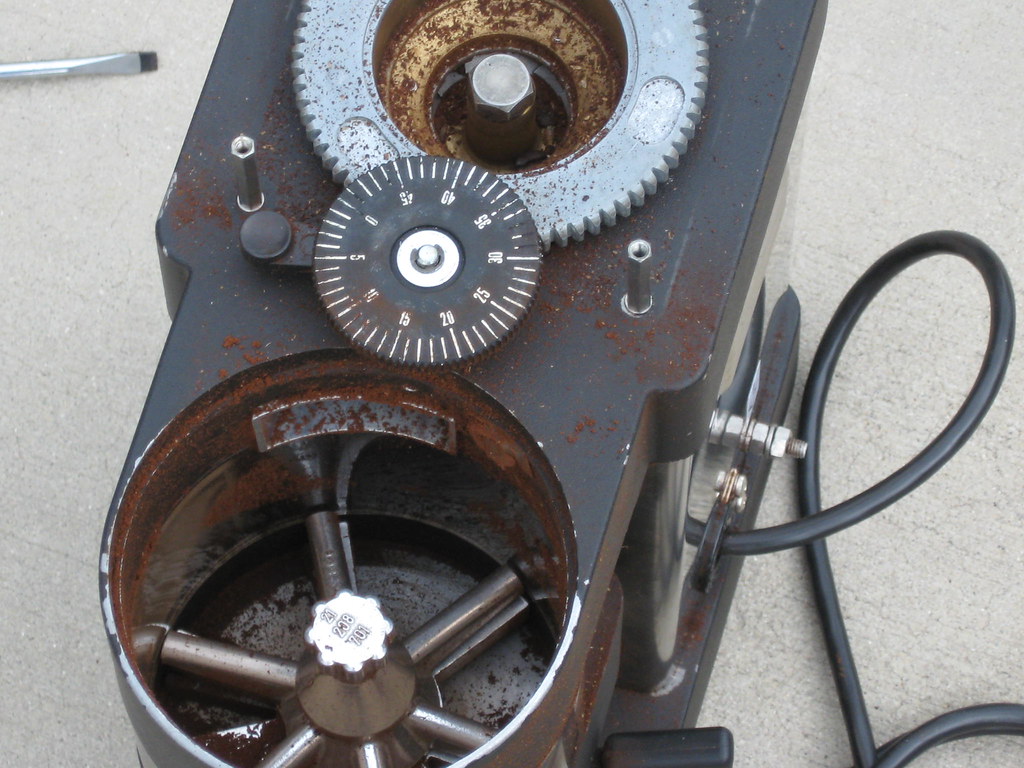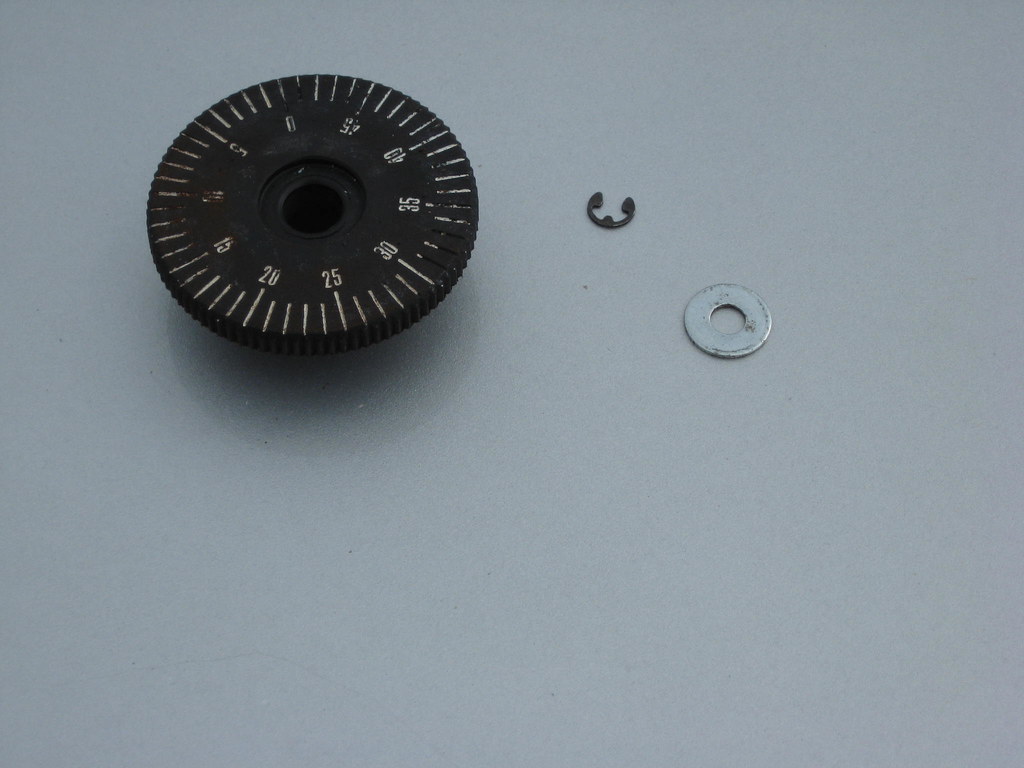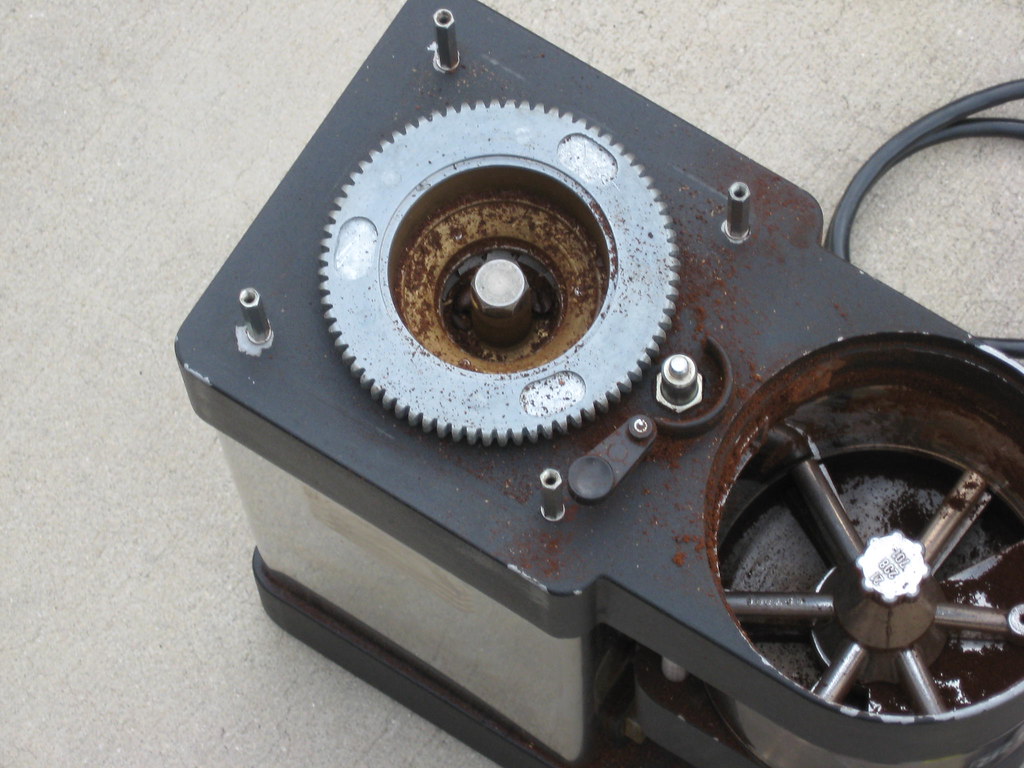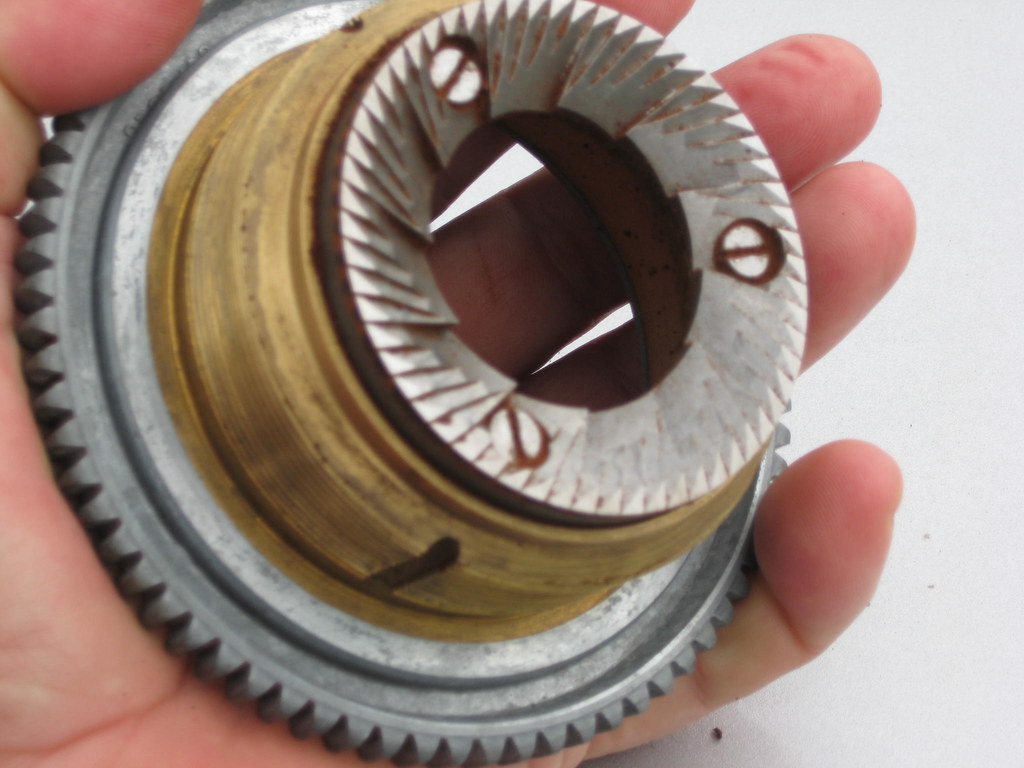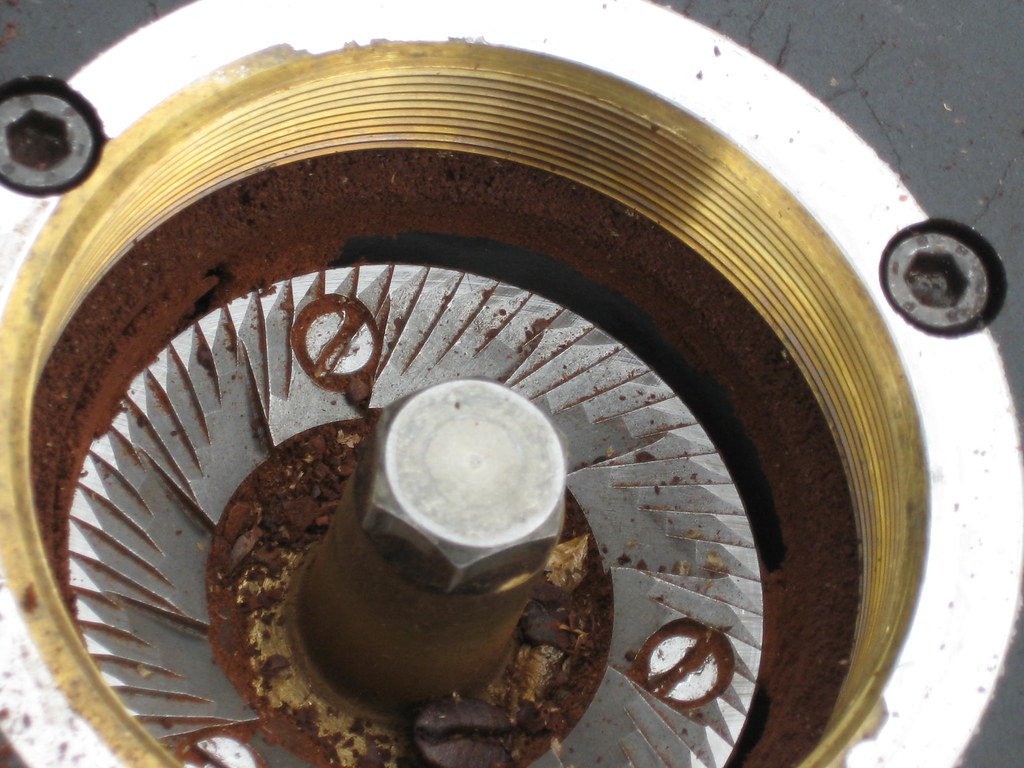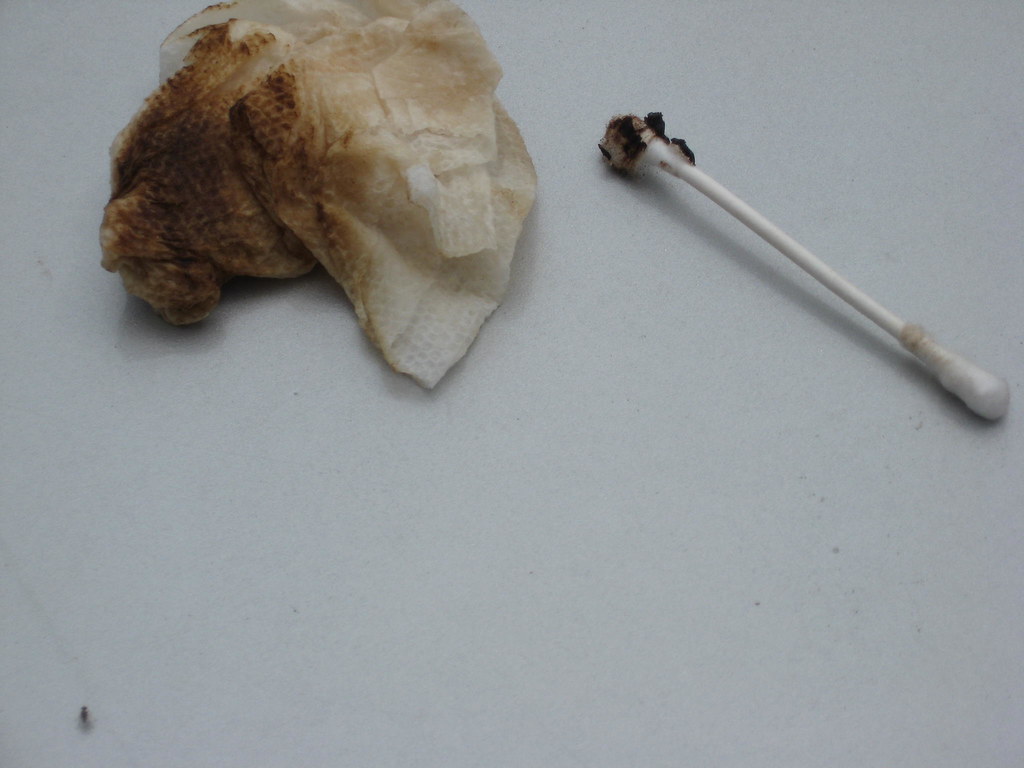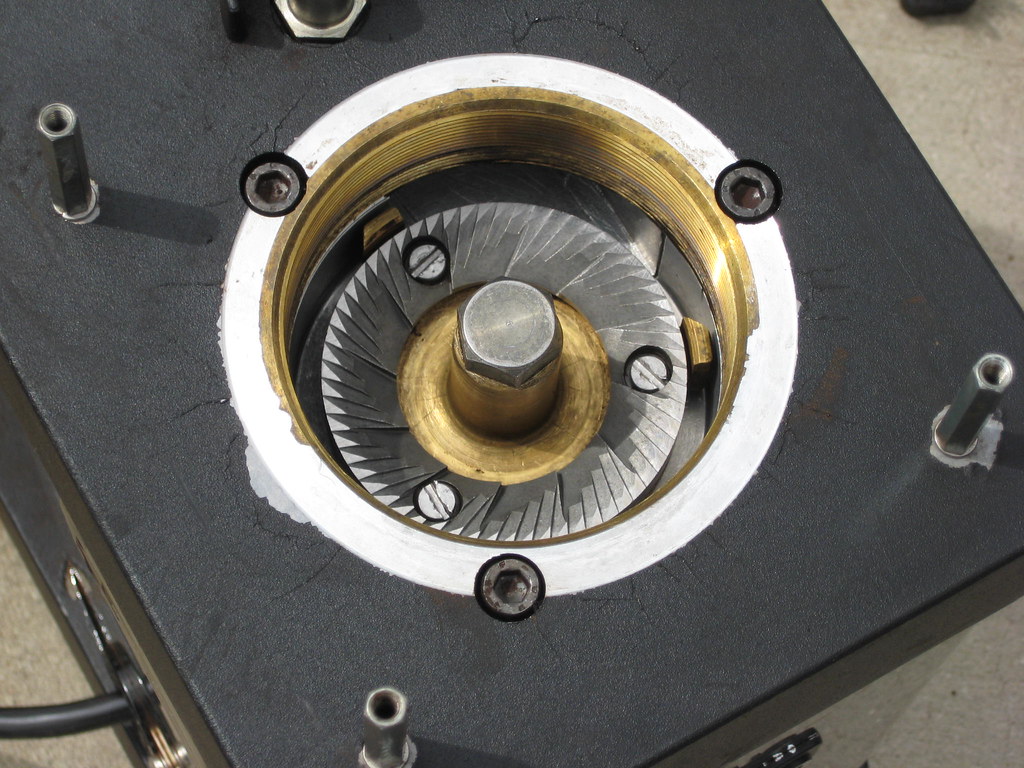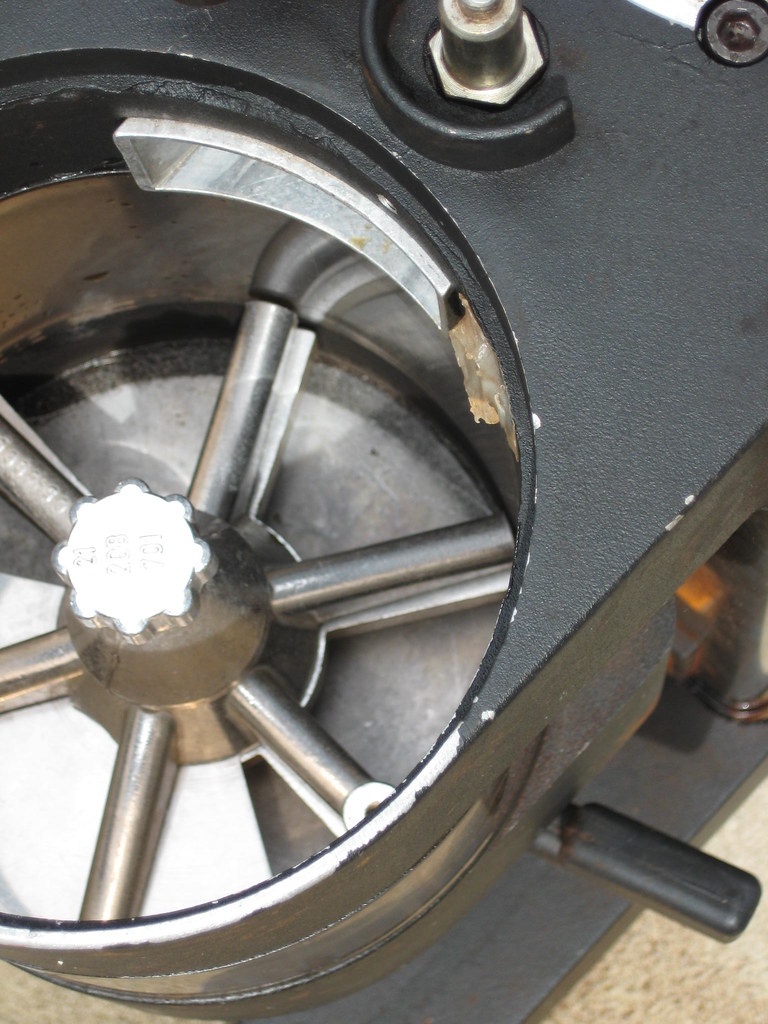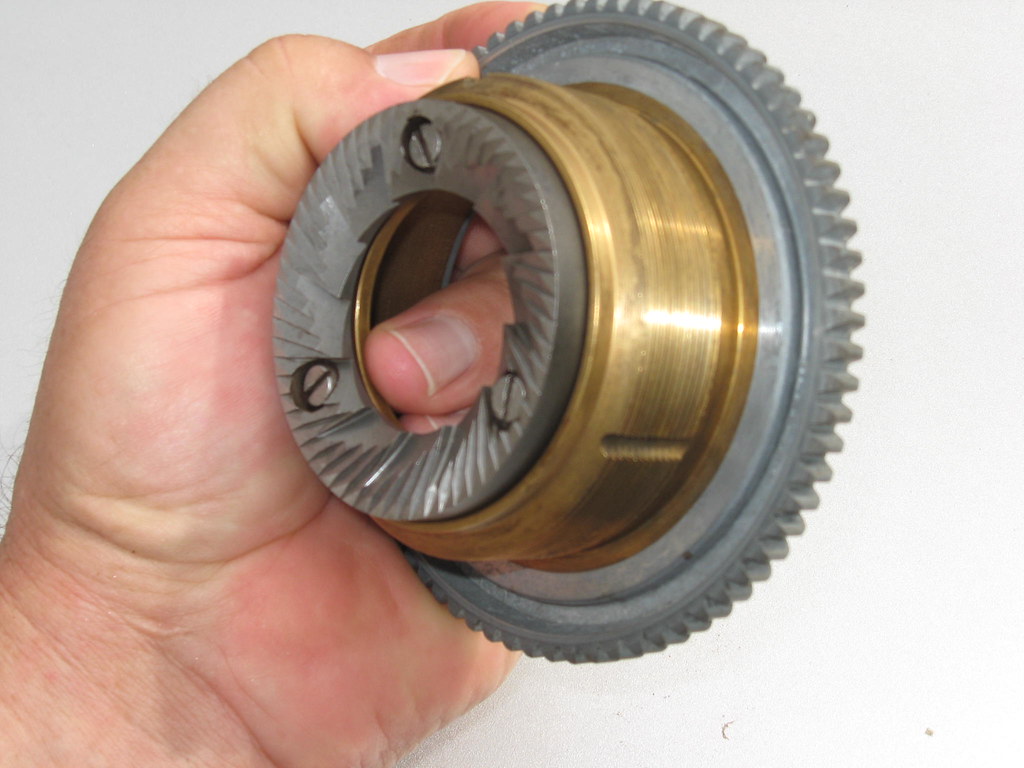Ranchillio MD-50
This is the lower burr carrier- Note built up oil on the burr carrier finger
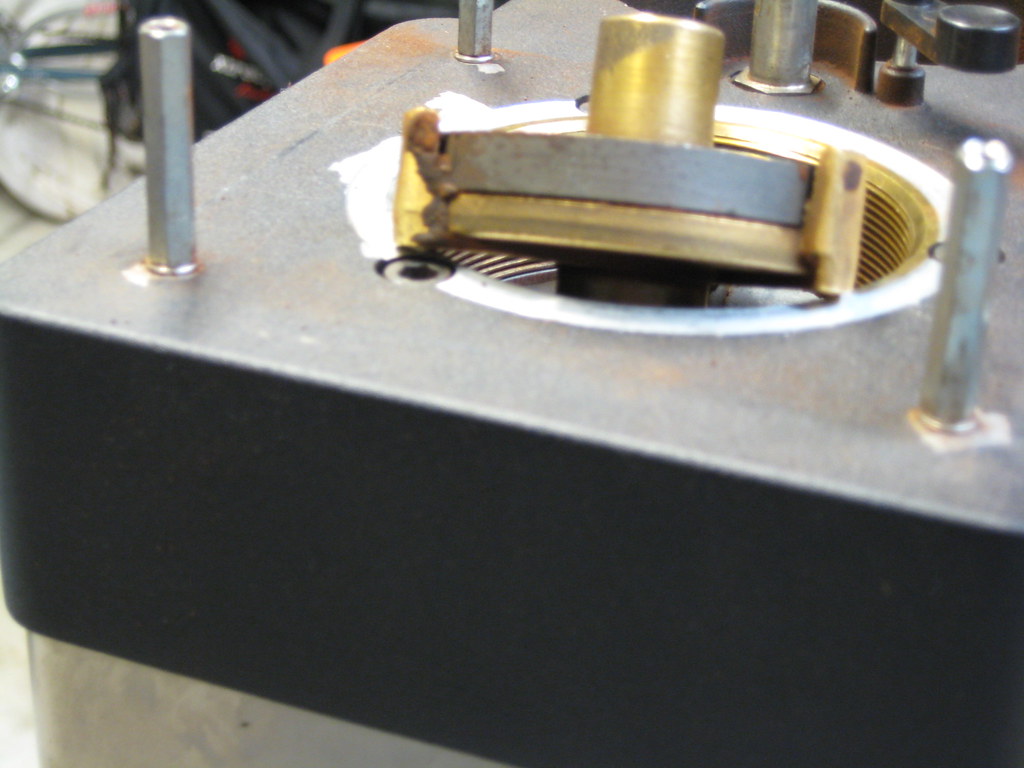
Below, lower burr carrier with lower burr flipped upside down resting on it...upper burr right side up off to the side
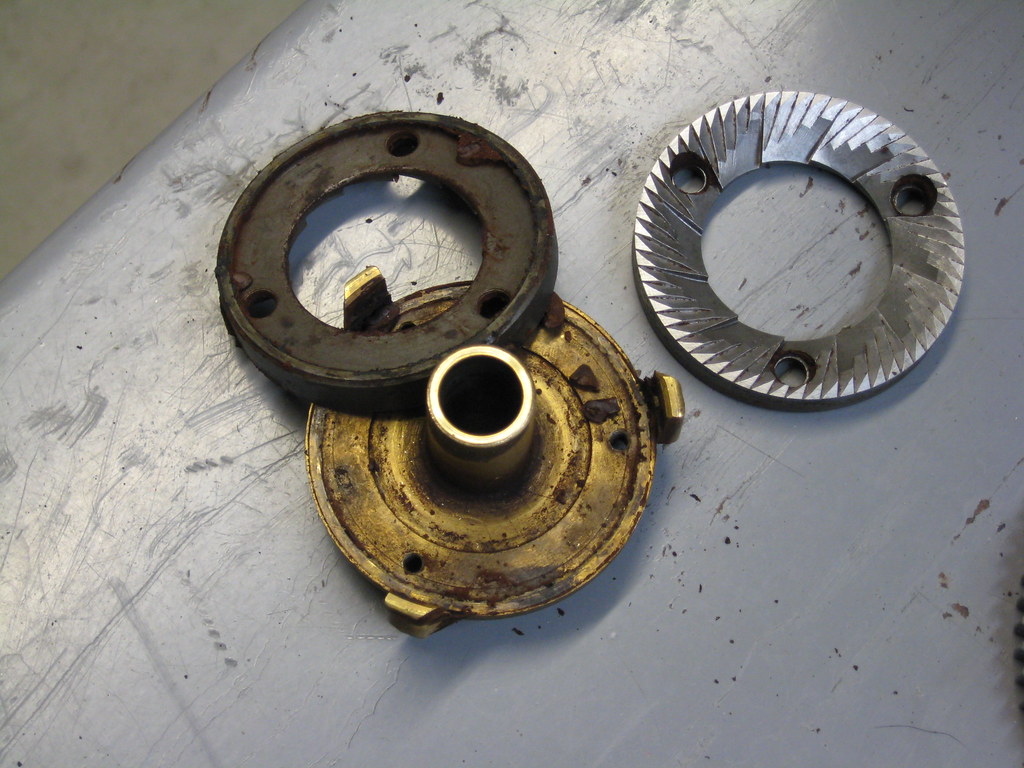
FWIW, these are 54 mm burrs. I use this grinder exclusively to grind coffee I roast for espresso, and I typically bring my roasts up to FC+. My maint. schedule for this grinder consists of...every two weeks, blow out with compressed air, removing the upper burr carrier so I can blow out the grinding chamber
...when i think it's time (every few months or so) I remove the lower burr carrier for a more thorough douching, and at this time, burrs are removed from both carriers and soaked in a solution of hot water and espresso machine cleaner...I like and use Joe Glo brand espresso machine cleaner for my soak water solution. FWIW2 I use a brass brush to scrub the carriers and burrs when cleaning these parts, and I'll use the Joe Glo solution with paper towel to wipe down the rest of the chamber including the doser chamber and follow with hot rinse water. Fun!, Fun!, Fun! yet this is what it takes to keep your cups tasting good, and yes, in case you were wondering, I was over due to clean the burr carriers this time around
I'm having company over later today and I'm pulling shots for them, on clean equipment thank you
Best,
Jake
Reddick Fla.
This is the lower burr carrier- Note built up oil on the burr carrier finger

Below, lower burr carrier with lower burr flipped upside down resting on it...upper burr right side up off to the side

FWIW, these are 54 mm burrs. I use this grinder exclusively to grind coffee I roast for espresso, and I typically bring my roasts up to FC+. My maint. schedule for this grinder consists of...every two weeks, blow out with compressed air, removing the upper burr carrier so I can blow out the grinding chamber
...when i think it's time (every few months or so) I remove the lower burr carrier for a more thorough douching, and at this time, burrs are removed from both carriers and soaked in a solution of hot water and espresso machine cleaner...I like and use Joe Glo brand espresso machine cleaner for my soak water solution. FWIW2 I use a brass brush to scrub the carriers and burrs when cleaning these parts, and I'll use the Joe Glo solution with paper towel to wipe down the rest of the chamber including the doser chamber and follow with hot rinse water. Fun!, Fun!, Fun! yet this is what it takes to keep your cups tasting good, and yes, in case you were wondering, I was over due to clean the burr carriers this time around
I'm having company over later today and I'm pulling shots for them, on clean equipment thank you

Best,
Jake
Reddick Fla.
